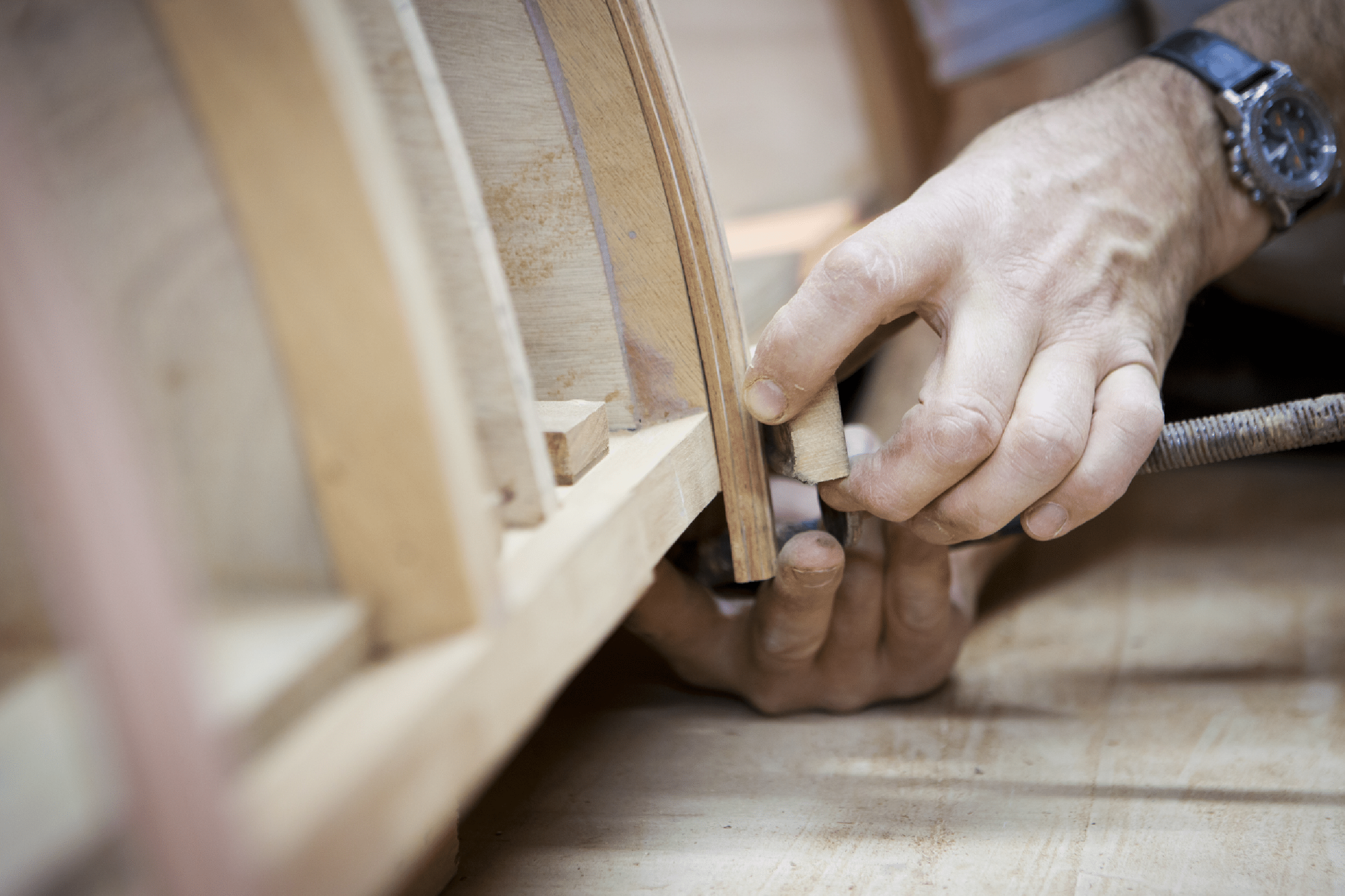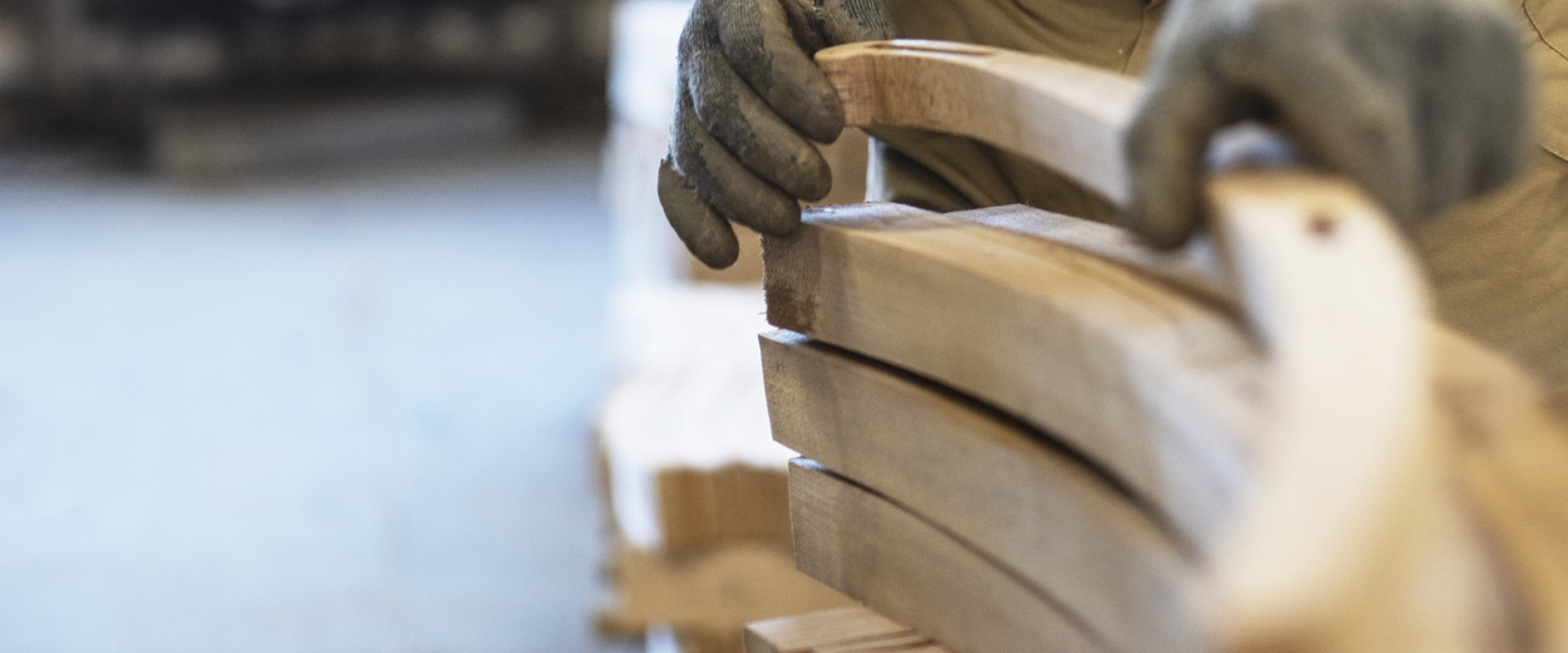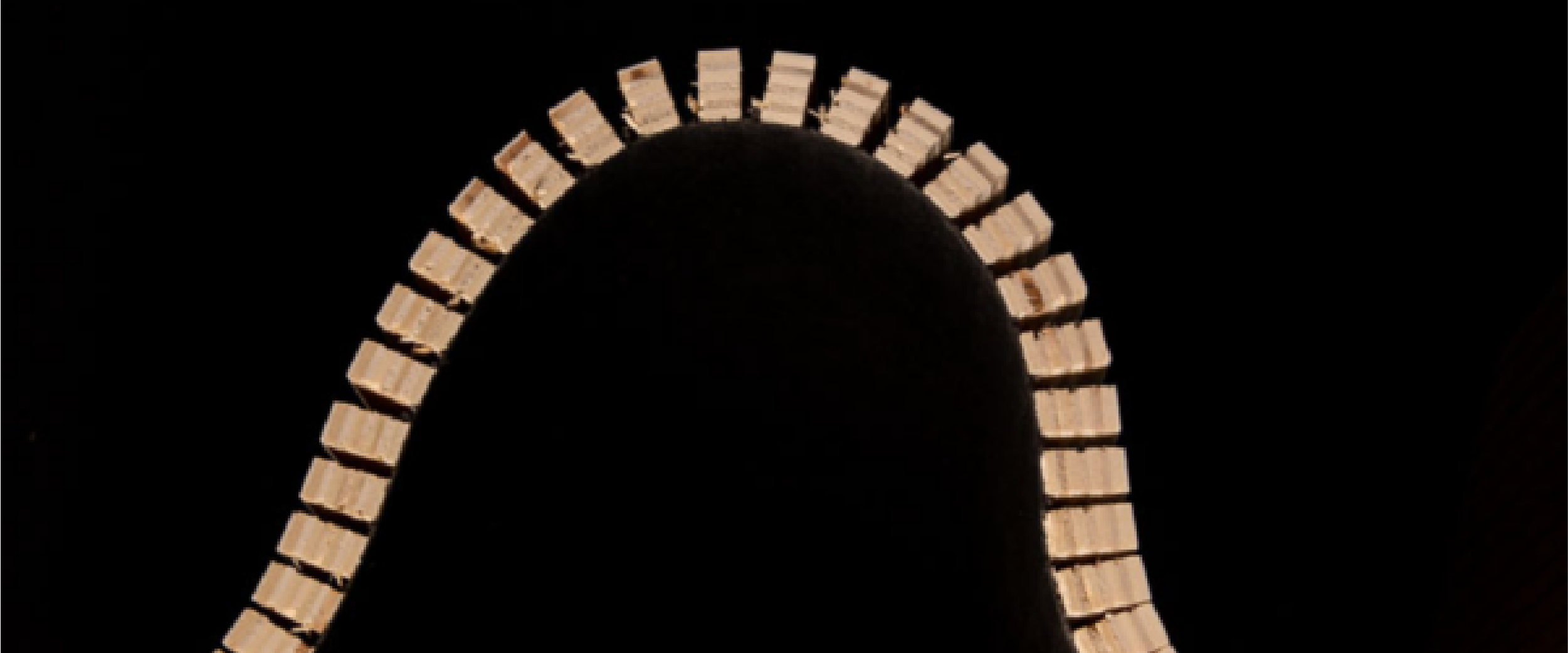
Kerfkore vs. Hand Kerfing: A Technical Comparison
September 17, 2025Fabricating curved architectural components has traditionally relied on hand kerfing—cutting a series of relief grooves into a rigid substrate to allow it to bend. While effective in certain applications, hand kerfing is labor-intensive and inherently inconsistent.
Modern engineered alternatives like Kerfkore provide pre-kerfed, factory-controlled panels that outperform manual methods in precision, efficiency, and lifecycle cost. We’re putting hand-kerfing and Kerfkore head-to-head to evaluate them based on quality, time, and cost to help fabricators determine the best solution for their production environment.
Quality
When it comes to curved fabrication, quality determines whether a project succeeds or fails. The difference between hand-kerfing and Kerfkore panels comes down to consistency, finish, and long-term performance.

Hand Kerfing
Manual kerfing often produces unpredictable results. Because each cut is made by hand, spacing and depth can vary across a single panel. This leads to uneven flexibility and higher chances of material. If you use hand kerfing, here’s what you need to keep in mind:
- High risk of splitting, fiber tear-out, and delamination during forming.
- Limited to large radii—tight bends and complex geometries are extremely difficult.
- Kerfed surfaces require patching or stabilization prior to lamination, which compromises finish quality.
Kerfkore
Kerfkore panels are engineered to remove those risks. Our process ensures every groove is precise and consistent, creating repeatable results across every sheet. Here’s what you need to know about the quality of Kerfkore:
- Uniform kerfs distribute stress evenly, eliminating weak points in the bend.
- The product line includes multiple core options to achieve a wide range of bend radii, from gentle arches to tight compound curves.
- It’s compatible with veneers, laminates, paints, and stains, allowing a seamless integration into finishing workflows.
Winner: Kerfkore delivers finish-ready panels and structural reliability that hand-kerfing simply can’t match.
Time
In fabrication, time is money. Hand-kerfing requires careful setup, skilled labor, and multiple steps to prepare panels, while Kerfkore arrives ready to bend.

Hand Kerfing
The manual approach adds hours to the process. Beyond cutting, fabricators must manage tool wear, dust, and extra finishing steps — making timelines unpredictable. If you’re hand kerfing, you’ll need to keep in mind:
- It requires skilled labor to set up and cut kerfs evenly
- Kerfing dust management and tool wear add overhead.
- Patching, sanding, and backer reinforcement extend fabrication time.
Kerfkore
Kerfkore streamlines the process from start to finish. Panels can be bent and laminated with minimal prep, keeping production moving smoothly. With Kerfkore, you can expect:
- Ready-to-bend substrate, eliminating hours of work
- Some of our panels can be laminated pre- or post-bending
- Consistency across panels leads to reliable outcomes
Winner: Kerfkore reduces cycle times and variability, allowing shops to hit tighter deadlines with fewer bottlenecks.
Cost
The true cost of fabrication isn’t just in material price. It’s in labor, waste, and delays. While hand-kerfing may seem cheaper upfront, Kerfkore proves more cost-effective in the long run.
Hand Kerfing
What looks like savings at purchase quickly adds up to overruns once the full process is considered.
- Skilled labor hours for kerfing and prep
- Wasted sheets from split or over-kerfed panels
- Reinforcement materials required to stabilize weak substrates
- Project delays caused by unpredictable forming outcomes
- Cost is highly variable and difficult to forecast.
Kerfkore
With Kerfkore, the upfront cost per sheet is higher, but performance and predictability reduce expenses over the project lifecycle.
- Predictable, repeatable performance translates to reduced labor, minimal waste, and fewer project delays.
- Lower rework rates and reduced shop time improve overall throughput.
Long-term ROI is realized through efficiency, reliability, and reduced project risk.
Winner: Kerfkore offers lower total installed cost despite a higher initial purchase price, making it the financially smarter choice for professional fabrication environments.
Final Verdict
For projects requiring curved components, the comparison is clear. Hand kerfing introduces variability, inefficiency, and hidden costs in the long run. On the other hand, Kerfkore delivers engineered consistency, shorter lead times, and predictable ROI.
For fabricators, designers, engineers, and architects who value repeatability and performance, Kerfkore is the superior solution.
Request a sample or contact Kerfkore today to evaluate how pre-kerfed panels can improve your next build.

